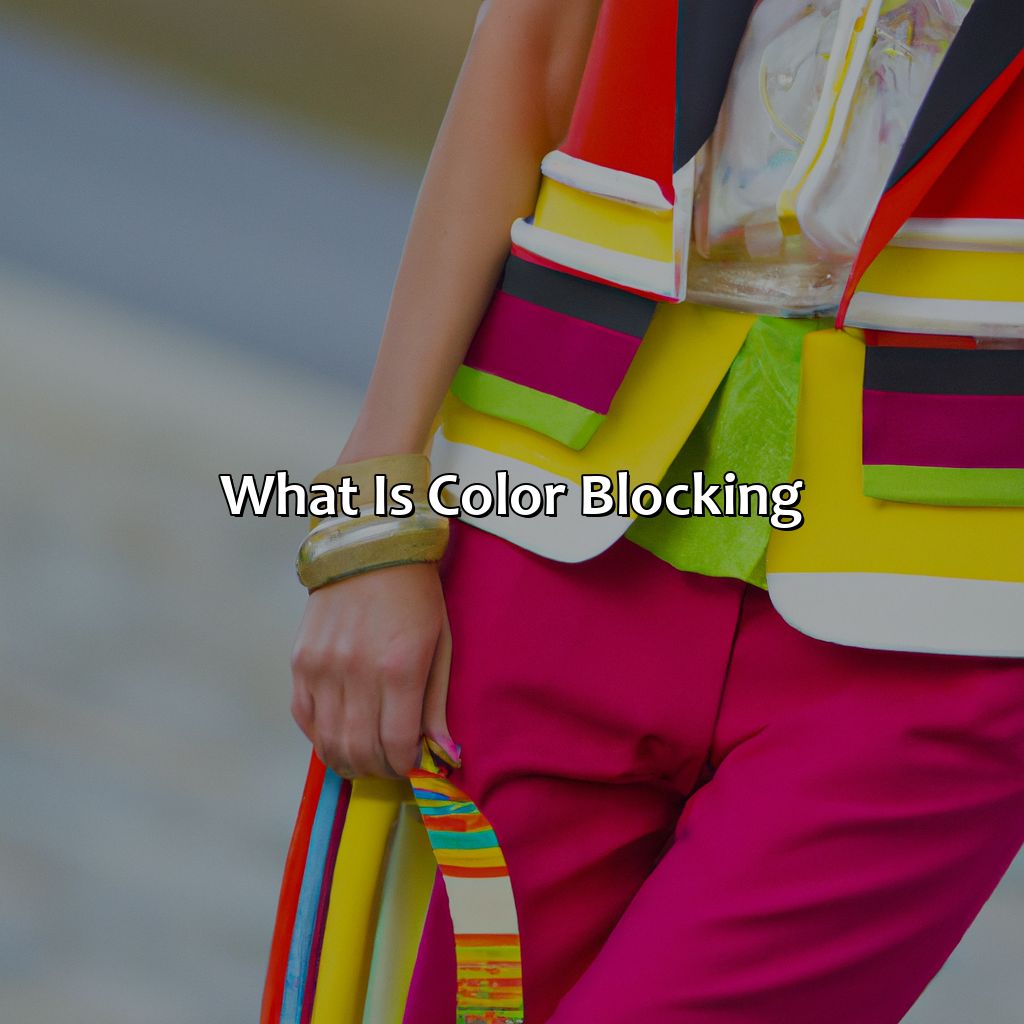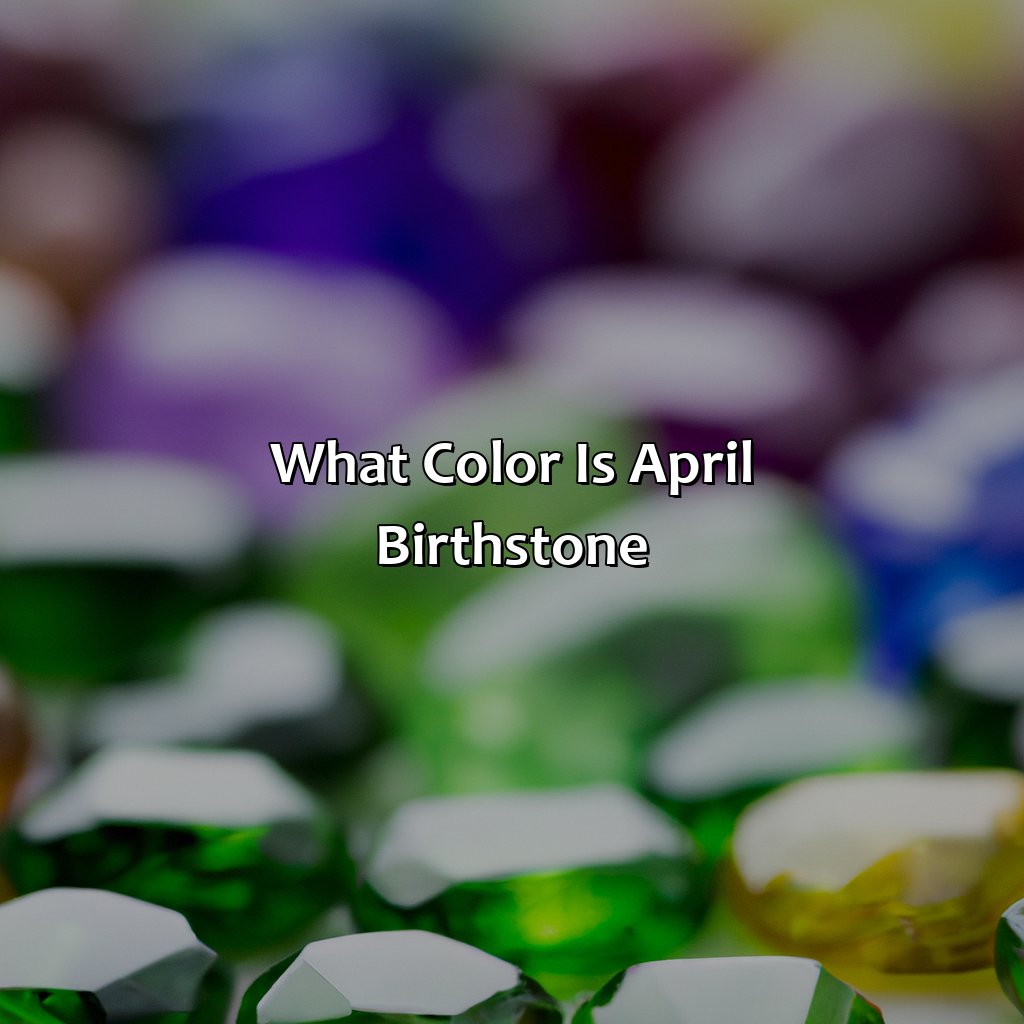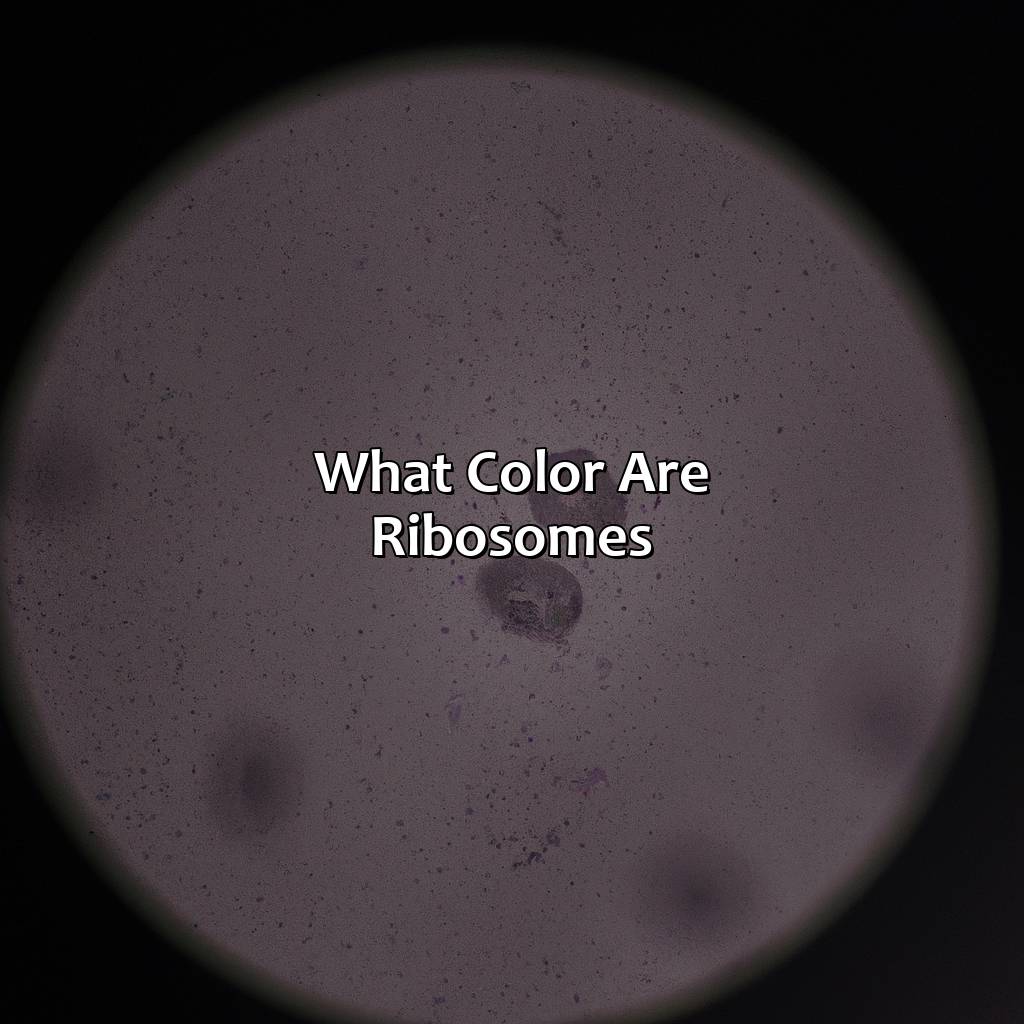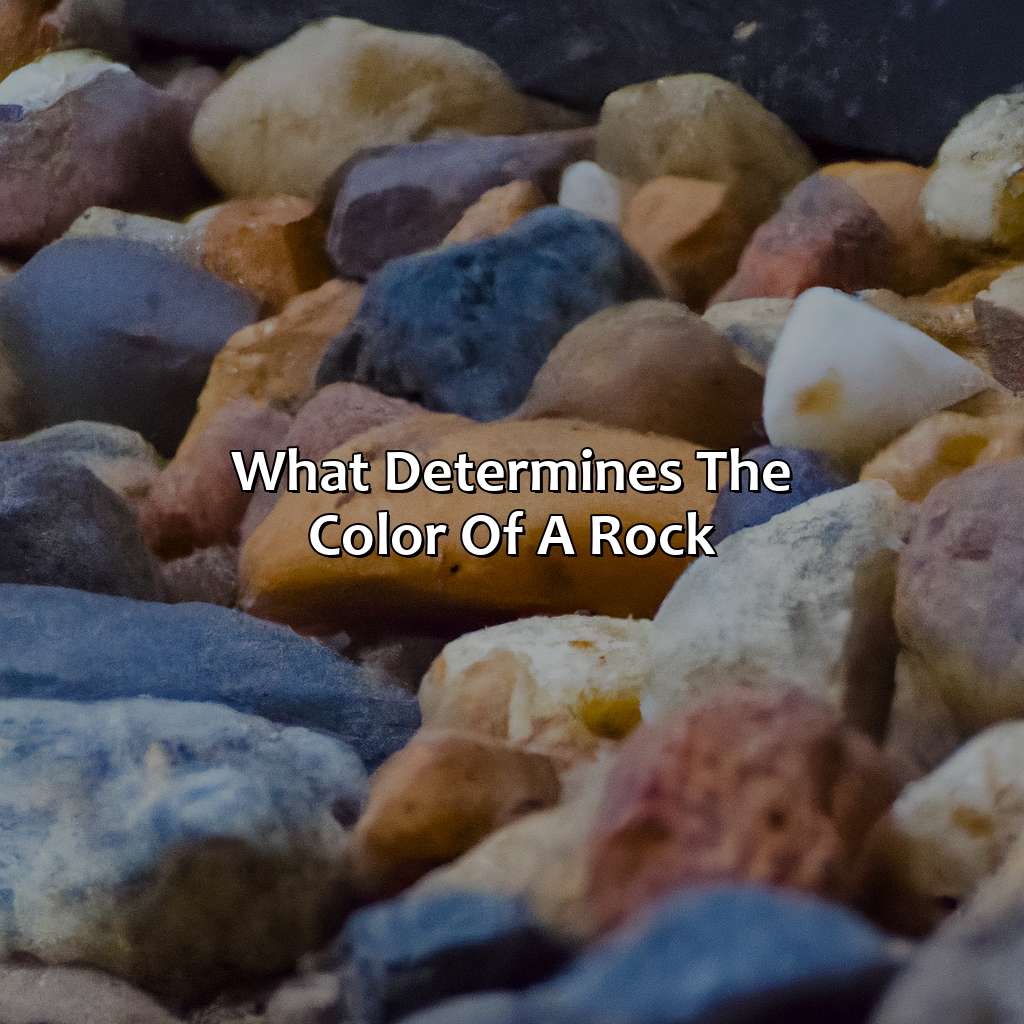Key Takeaway:
- Color blocking refers to the practice of using solid blocks of different colors in an outfit, interior design, or artwork. It is a popular trend that adds visual interest and energy to a space or ensemble.
- Color blocking has a history that can be traced back to the early 20th century, when artists and designers began experimenting with abstract and geometric shapes. It gained popularity in the 1960s and 1970s for its bold and modern aesthetic.
- The benefits of color blocking include creating a visually appealing design, adding dimension and depth, and expressing creativity. It also allows for different color combinations that can highlight certain aspects of a design or draw attention to a particular area.
Definition of Color Blocking
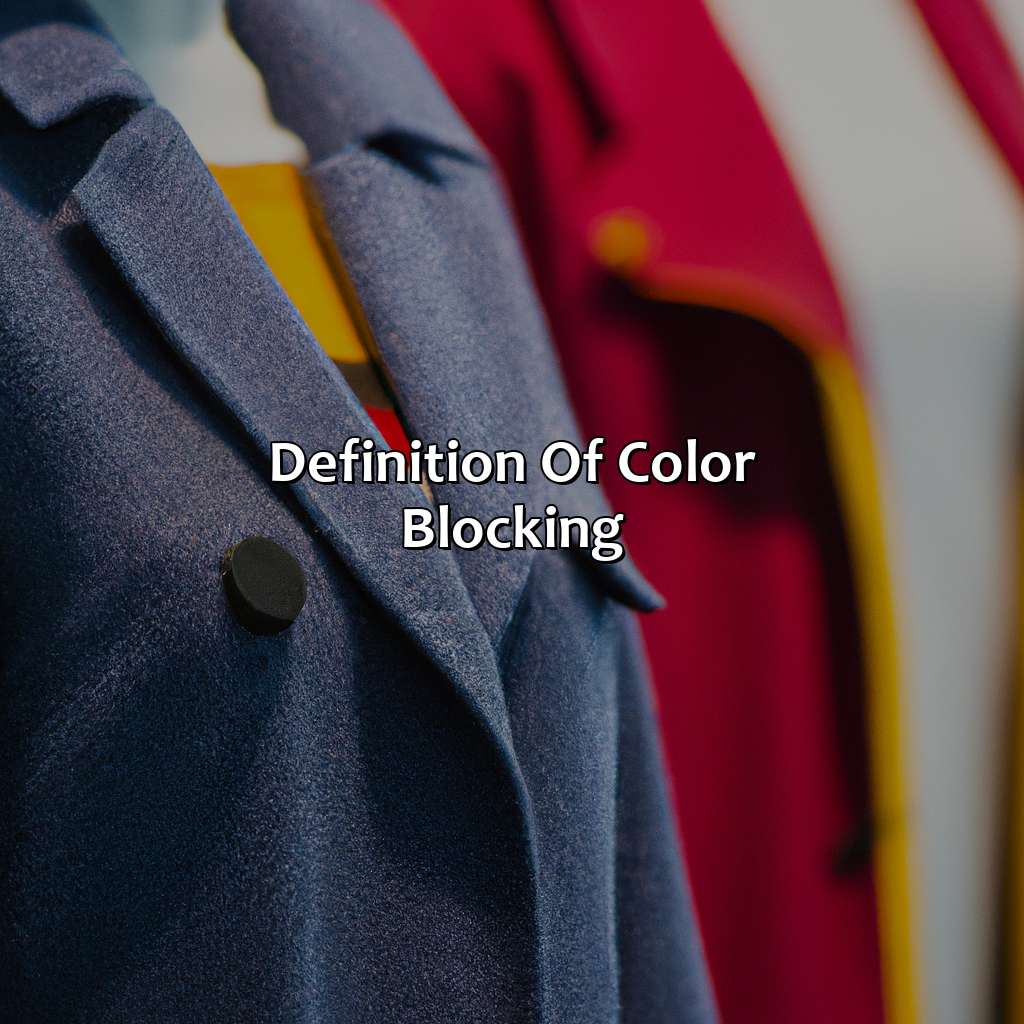
Photo Credits: colorscombo.com by Robert Young
Color blocking is a fashion technique that uses bold blocks of color to create an eye-catching look. It involves pairing contrasting colors together in a way that makes a statement. This technique is commonly used in clothing, shoes, and accessories. By using different shades of colors, it creates a visually appealing outfit that stands out from the usual monochrome or patterned options. Color blocking allows a person to express their unique style and personality through the way they dress. It is a popular trend that has been embraced by fashion designers and enthusiasts alike. Don’t miss out on this trend, try it for yourself and stand out from the crowd!
The History of Color Blocking
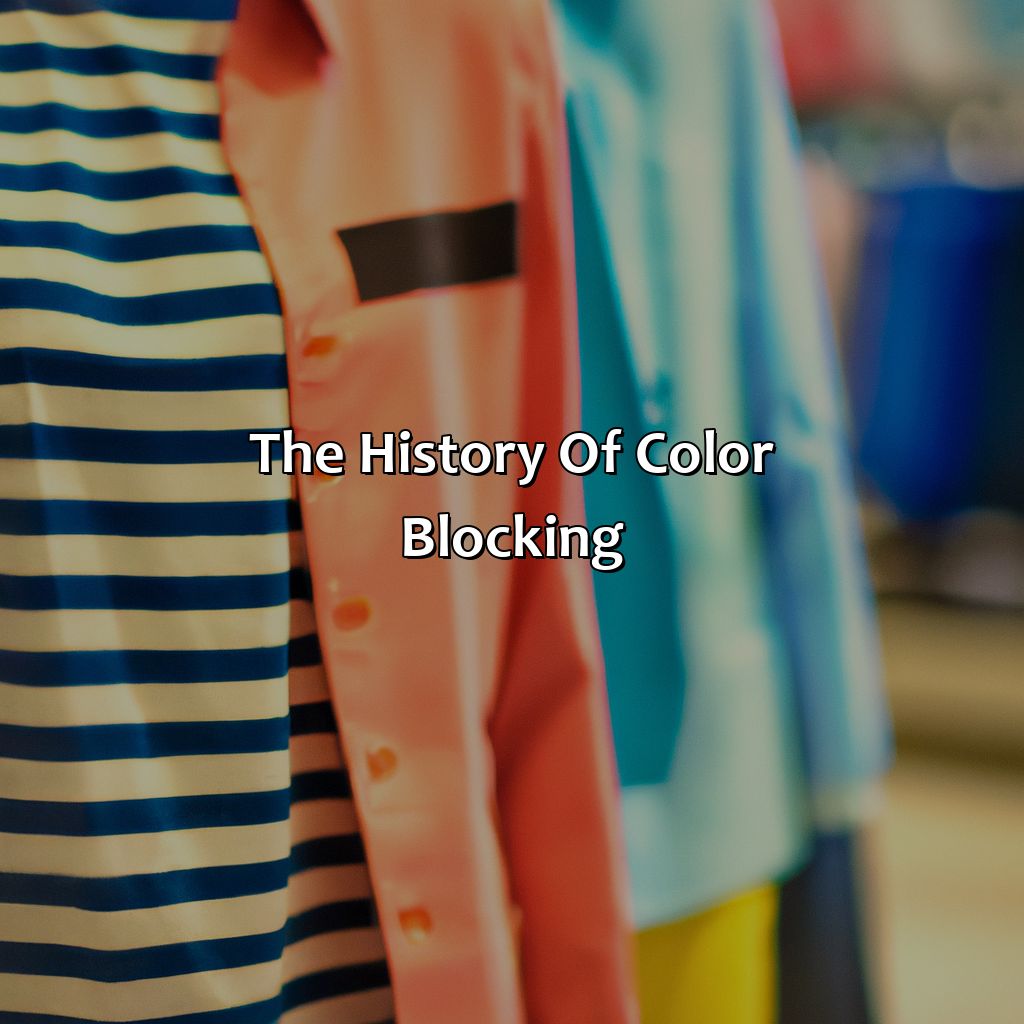
Photo Credits: colorscombo.com by Joe Robinson
Color blocking has a rich history in the world of fashion and design. It emerged as a technique in the early 20th century when artists began experimenting with ways to create bold and striking visual contrasts. By the 1960s, color blocking had become a widely popular trend in both clothing and interior design.
The beauty of color blocking lies in its simplicity. It involves pairing together contrasting colors in bold and unexpected ways, creating a dynamic visual impact. This technique has been used to great effect in everything from clothing to home decor, and it continues to evolve and inspire new generations of designers.
One unique aspect of color blocking is that it allows for endless possibilities and combinations of colors. Designers can play with different hues, shades, and tones to create unique and memorable palettes. This has made color blocking a popular choice among those who seek to make a statement with their style.
If you’re looking to incorporate color blocking into your wardrobe or design projects, there are a few key suggestions to keep in mind. First, choose colors that complement each other well and create a harmonious balance. Second, experiment with different shapes and patterns to add depth and texture to your designs. Finally, be bold and have fun – color blocking is all about using vibrant hues and playful combinations to create something truly memorable.
Benefits of Color Blocking

Photo Credits: colorscombo.com by Stephen Brown
Color blocking is a fashion trend where solid blocks of various colors are combined to create a striking outfit. It is popular as it can be easily customized to suit individual styles and preferences.
The benefits of color blocking can be described as follows:
- Creates a bold statement: Color blocking can make a statement and leave a lasting impression. It draws attention and can communicate confidence and creativity.
- Enhances visual appeal: The combination of different colors adds depth and dimension to an outfit, making it visually appealing both on and off-camera.
- Increases outfit options: Color blocking expands outfit options by combining pieces in new and unexpected ways. This is especially useful for those with limited wardrobes who want to create new looks without new pieces.
- Flatters body shape: By strategically placing blocks of color, color blocking can manipulate the silhouette of an outfit to flatter the wearer’s body shape.
- Encourages experimentation: The versatility of color blocking means there are endless possibilities to experiment with color combinations, allowing for creative expression and style evolution.
In addition to these benefits, color blocking can also be used to create a statement in various areas of design, including interiors, graphic design, and branding.
To fully embrace the benefits of color blocking, one should not be afraid to experiment with different color combinations. Explore color theory and consider complementary, contrasting, or monochromatic combinations to create a unique statement. By incorporating color blocking into your wardrobe or design work, you can add a touch of vibrancy and creativity.
Don’t miss out on the opportunity to elevate your style or design with color blocking. Start experimenting and creating bold statements today.
Essentials of Color Blocking
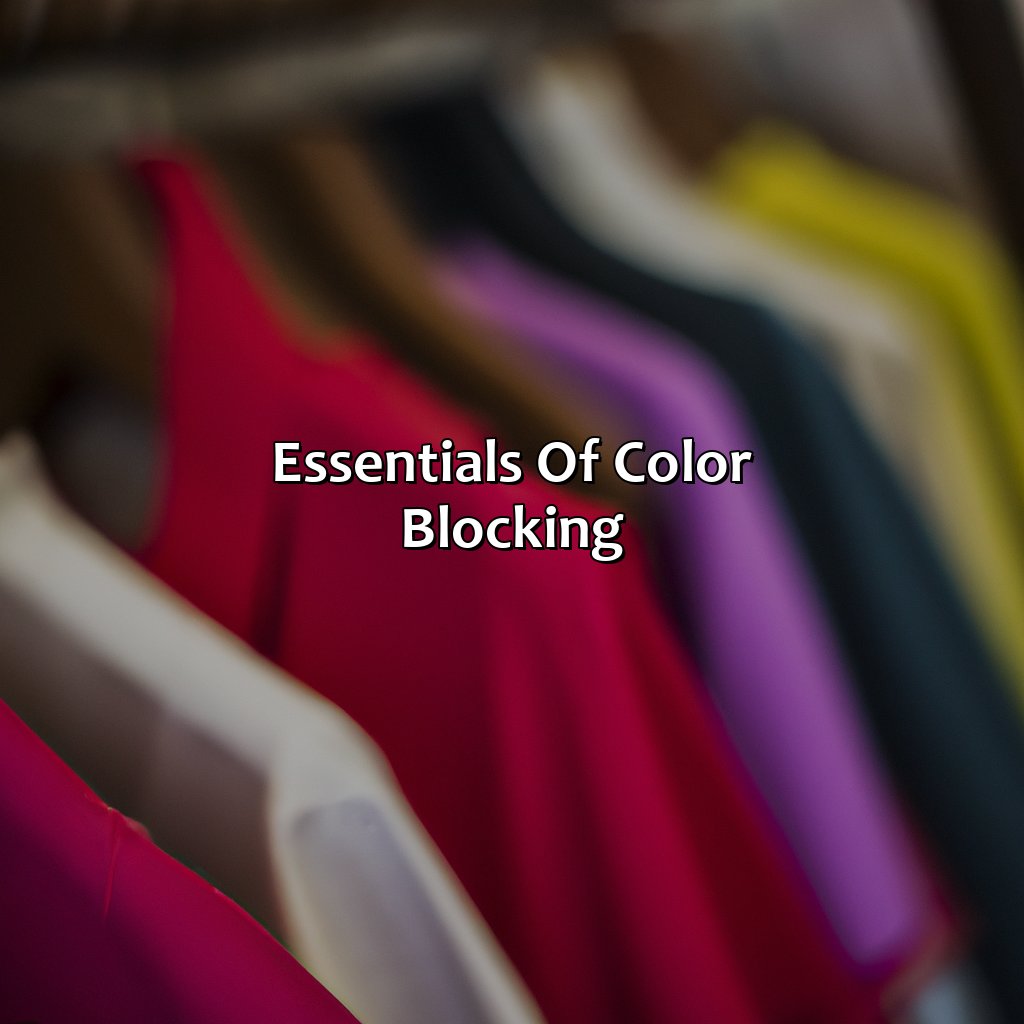
Photo Credits: colorscombo.com by Lawrence Carter
We have a solution to help you understand color blocking basics. Tips, ideas, and techniques for fashion, interior design, and art are included. You’ll explore color blocking combinations and items such as clothes, patterns, prints, shoes, accessories, and makeup. We’ll explain various color schemes like monochromatic, complementary, analogous, triadic, and more. We have a guide for color blocking prints, stripes, polka dots, florals, and more. Plus, do’s and don’ts. Lastly, you’ll discover how color blocking is used in interior design and art with inspiring ideas.
Color Blocking in Fashion
Fashion experts define color blocking as a trendy and artistic approach to styling outfits, where bold and contrasting colors are used together to create a striking look. This technique has become popular among fashion enthusiasts of all styles, helping them enhance their wardrobe with unique color combinations, clothes, and accessories.
Color blocking in fashion requires using color theory principles such as monochromatic, complementary, analogous, triadic, tetradic, and split complementary. Beginners must start with applying neutral colors like black, white or grey paired with one bright or pastel tone from the same family to achieve balance. Understanding how patterns and prints like stripes, polka dots or florals complement each other is also essential.
To master the art of color blocking in fashion, it’s essential to focus on details such as pairing shoes, bags, jewelry, scarves or hats that match either primary or accent colors used in the outfit. Makeup and nail art can also contribute to completing the look. Techniques such as layering different pieces of clothes like dresses over tops or sweaters over skirts can add depth and dimension.
However, there are some do’s and don’ts to follow when applying this trend. Do experiment with different combinations while following the described guidelines; don’t opt for too many contrasting hues at once. Do use metallics for an extravagant look; don’t forget that less is more when it comes to accessories.
If you’re seeking inspiration or ideas on how to incorporate color blocking into your wardrobe successfully, browse through online platforms like social media accounts or fashion blogs dedicated exclusively to this trend. Don’t miss out on the opportunity to elevate your style game by incorporating color blocking correctly!
Color blocking in interior design: because who needs boring neutrals when you can have a rainbow of furniture, bedding, curtains, rugs, kitchenware, and even phone cases and car interiors?
Color Blocking in Interior Design
The strategic placement of bold colors on rugs, curtains, furniture, bedding or wall art makes the space seem more spacious than it actually is. Bold-colored walls anchor an accent piece such as an abstract painting or textured rug making it stand out and highlight its beauty. One can also try color blocking daily objects such as kitchenware, stationery, phone cases, watches or even car interiors.
Interesting variations of Color Blocking in Interior Design include embossed wallpapers with geometric prints. It is a trendy yet timeless way to add drama to a room without creating cluttered chaos like overpowering patterns do.
Try Color Blocking ideas inspired by fashion for whatever your budget may be! High-end designer pieces like brightly hued flats and heels, bags or wallets that follow minimalist designs for everyday luxury upgrade will complement your interior decor scheme unfailingly.
In the past decade, Modern lovers of contemporary design have taken cues from Art Deco movement in creating modern interpretations of Cubism. This movement along with Bauhaus has given rise to modernist approach towards strong graphic style-color-blocking technique.
Color blocking in art: where Picasso meets Mondrian and creates a visual masterpiece.
Color Blocking in Art
In contemporary art, color blocking has become a popular technique among artists who want to create striking compositions with minimal elements. Some artists have used color blocking as part of their exploration of abstraction, such as Mark Rothko’s iconic works that feature large rectangular forms filled with solid colors. Others use it as a way to play with symmetry and contrast, like Piet Mondrian’s De Stijl movement.
Unlike other forms of art, color blocking allows artists to create striking pieces with simple yet impactful designs. Emphasis is placed on how different hues interact with each other, rather than having intricate details and patterns.
One example is the work of David Hockney’s Pool series from 1964. In this series, Hockney uses bold, bright blocks of color that represent different parts of the pool and its surroundings. The resulting artwork is a vibrant snapshot of summer life that captures both the essence and aesthetic beauty of the environment.
Overall, Color Blocking in Art is an effective technique that allows artists to communicate complex ideas by pairing simple yet bold compositions with powerful emotional triggers through careful selection and placement of colors.
If you’re hesitant to color block, don’t be afraid to let your inner artist run wild when choosing colors and techniques.
How to Color Block

Photo Credits: colorscombo.com by Nicholas Nguyen
Professional Guide to Execute Color Blocking
Color blocking is an art of styling multiple hues in a single outfit. By strategically combining colors, you can create a bold and vibrant yet sophisticated look. Here’s how to nail the technique in 6 simple steps:
- Pick your palette: Choose a dominant color and complement it with two or three accentuating colors. Experiment with shades that contrast yet complement each other.
- Balance is key: Do not overdo any one color. Balance the color blocks by dividing them equally on your outfit or accessories.
- Be mindful of patterns: Keep patterned pieces to a minimum, so they don’t clash with the color blocks. If you want to incorporate them, choose a single patterned item.
- Accessories add charm: Opt for accessories that correspond with the color palette of your outfit to enhance the look.
- Play with textures: Vary the textures of the fabrics in your outfit to add dimension to your look.
- Location of color blocks: Depending on your body shape and the area you want to accentuate, place the color blocks strategically on your outfit to achieve a flattering look.
To execute perfect color blocking, avoid monotony and add uniqueness to your look by incorporating these techniques.
Hone your ability to color block by implementing these practical tips. You will stand out and catch the eye of others. Do not miss out on the joy of experimenting with colors to create a personalized style statement.
Examples of Color Blocking
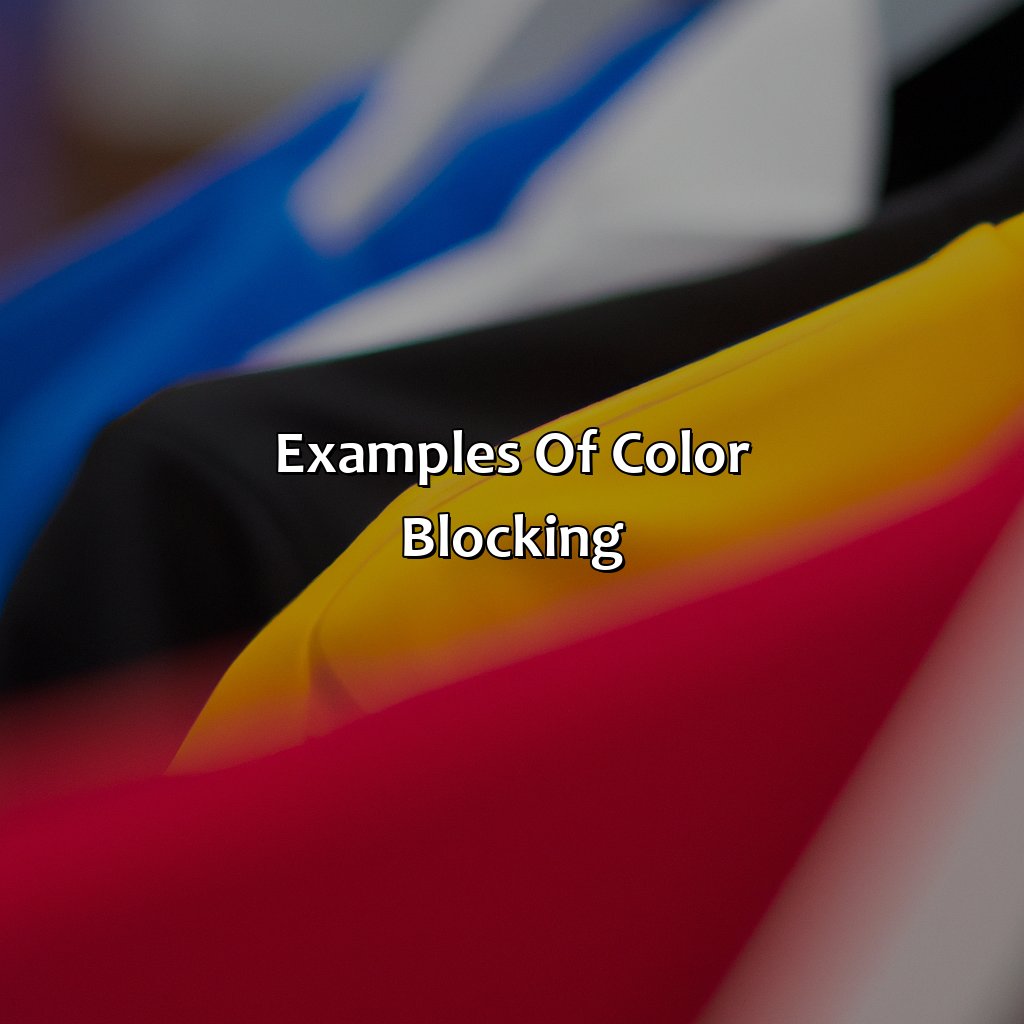
Photo Credits: colorscombo.com by Eric Lee
To showcase the style trend of Color Blocking, here are some noteworthy examples in the realm of fashion, runway, home decor, and artwork.
- In fashion, the trend of wearing bright color combinations in a single outfit is an outstanding example of color-blocking. Designers often choose striking hues like green and orange to contrast and coordinate within a single piece of clothing.
- On the runway, color-blocking is often combined with contrasting textures and shapes. An example is a monochrome outfit with a single block color pop on the neckline or cuffs.
- Home decor designers often use bright and solid color contrasting combinations to make spaces pop. An example is a single bold and bright yellow wall color combined with darker furniture.
- In the art world, color-blocking is often used as an abstraction technique where larger areas of one color are used to break up a canvas. Artists often choose contrasting colors to create striking and bold compositions.
It is worth mentioning that color-blocking has evolved from its foundation in modernist painting to a widespread trend in design. The result of integrating contrasting colors into designs is that it can make an entire object or outfit feel more significant than it would be otherwise. Don’t miss out on this popular trend, and incorporate it into your style, as it is an effortless and elegant way to incorporate color into your daily life.
Dos and Don’ts of Color Blocking

Photo Credits: colorscombo.com by Brandon Brown
Color blocking has gained immense popularity in the fashion industry in recent years. If you want to stay on top of the trend game, it’s important to know the dos and don’ts of color blocking. Here’s a quick guide:
- DO experiment with contrasting colors: Use colors that are opposite to each other on the color wheel for maximum impact.
- DO keep it simple: Stick to two or three colors, or accessories, to avoid a chaotic and unappealing look.
- DO play with patterns and textures: Mix and match solid colors with intricate patterns and textures to add an extra pop of visual interest.
- DO accessorize strategically: Use accessories to bring the whole outfit together and balance out the colors.
As for the don’ts:
- DON’T overdo it: Using too many colors or combining the wrong colors can overwhelm and clash.
- DON’T forget the neutrals: Neutral colors like black, white, gray or beige can anchor and balance out a color-blocked outfit.
- DON’T let the colors wear you: Choose colors that complement your skin tone and style, rather than wearing colors that wear you out.
- DON’T be afraid to break the rules: Feel free to experiment and mix and match according to your own personal style.
Remember that color blocking can make a bold fashion statement, but it also requires some careful consideration to get it right. With these dos and don’ts in mind, you’ll be well on your way to creating a stunning color-blocked outfit.
It’s also worth noting that color blocking isn’t just limited to clothing, but can also be used in home decor, graphic design and other forms of visual art. Explore the possibilities and see how color blocking can bring a new dimension to your creative pursuits.
So don’t miss out on this hot fashion trend – unleash your inner artist and start color blocking today!
Five Facts About Color Blocking:
- ✅ Color blocking is a fashion trend where contrasting blocks or panels of color are combined to create a bold and striking look. (Source: PopSugar)
- ✅ The trend emerged in the 1960s with the work of artists such as Piet Mondrian and Yves Saint Laurent. (Source: Vogue)
- ✅ Color blocking can be achieved with any combination of colors, from complementary colors like blue and orange to contrasting colors like pink and green. (Source: Harper’s Bazaar)
- ✅ The trend has expanded beyond clothing to include home decor, graphic design, and even hair styles. (Source: Refinery29)
- ✅ Color blocking is a versatile trend that can be adapted for any style or occasion, from casual outfits to formal events. (Source: InStyle)
FAQs about What Is Color Blocking
What is color blocking?
Color blocking is a technique in fashion and design where multiple solid colors are used in an outfit or design to create a bold and geometric look. It involves combining two or more solid colors that complement or contrast each other in a stylish and creative way.
How do I incorporate color blocking into my outfit?
You can incorporate color blocking into your outfit by choosing two or more colors that complement or contrast each other and wearing them in different sections of your outfit. For example, you can wear a hot pink top with a pair of turquoise pants and a yellow jacket for a stylish and bold look.
What are the benefits of color blocking?
The benefits of color blocking include creating a bold and stylish look, showcasing your personal style, and drawing attention to specific areas of your outfit or design. It can also help you mix and match colors that you may not have thought of before.
Can color blocking be used in home decor?
Yes, color blocking can be used in home decor by combining solid colors in complementary or contrasting ways. For example, you can paint your bedroom walls in a light blue color and use yellow and green accent pieces to create a refreshing and calming environment.
Who can wear color blocking?
Anyone can wear color blocking, as it is a fun and creative technique that can be tailored to your personal style. Whether you prefer bold and bright colors or subtle and muted tones, color blocking can be used to create a unique and stylish outfit or design.
Are there any rules for color blocking?
While there are no strict rules for color blocking, it is generally recommended to choose colors that complement or contrast each other in a stylish and harmonious way. You can also experiment with different color combinations and patterns to create a unique and personalized look.
